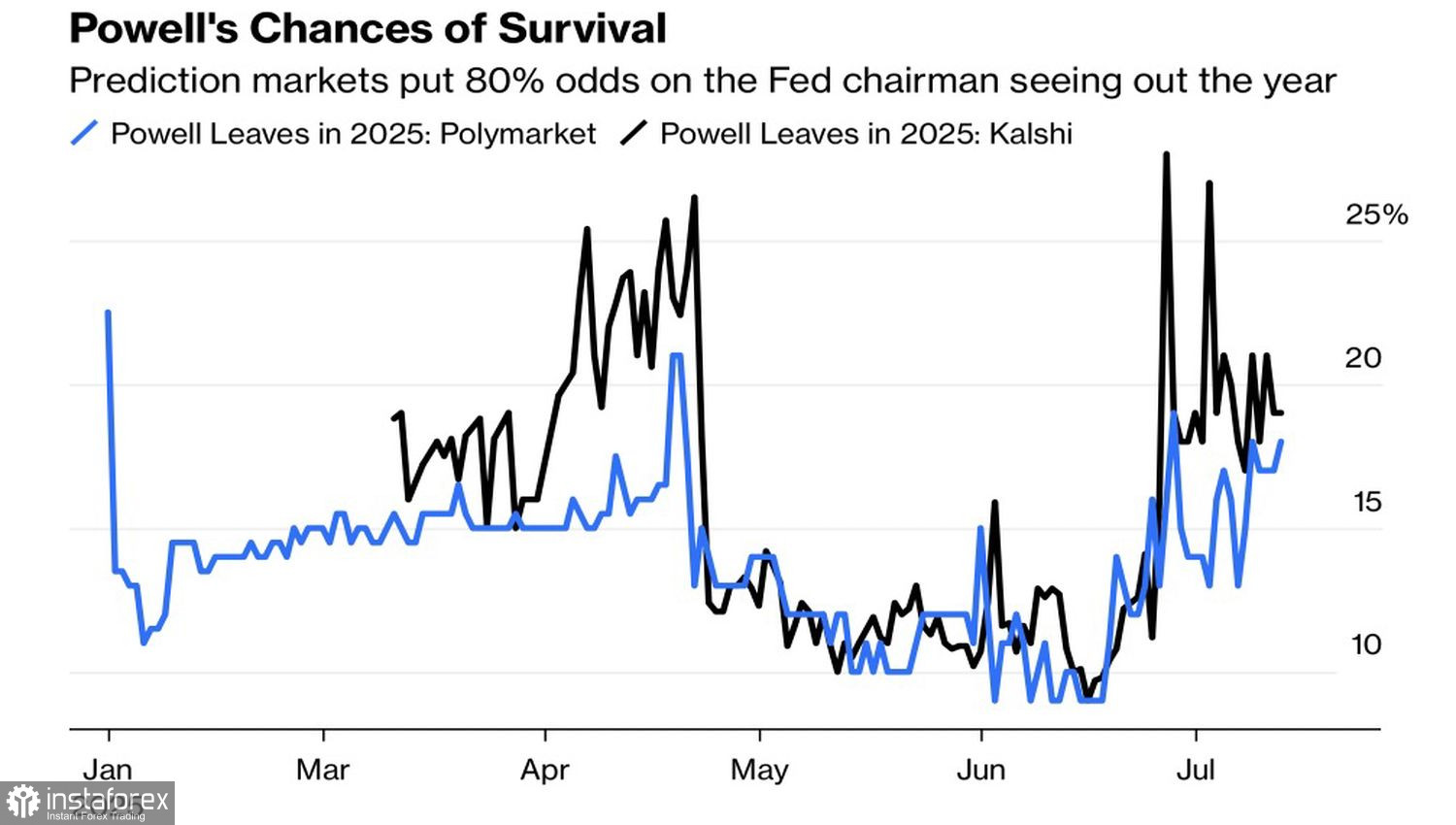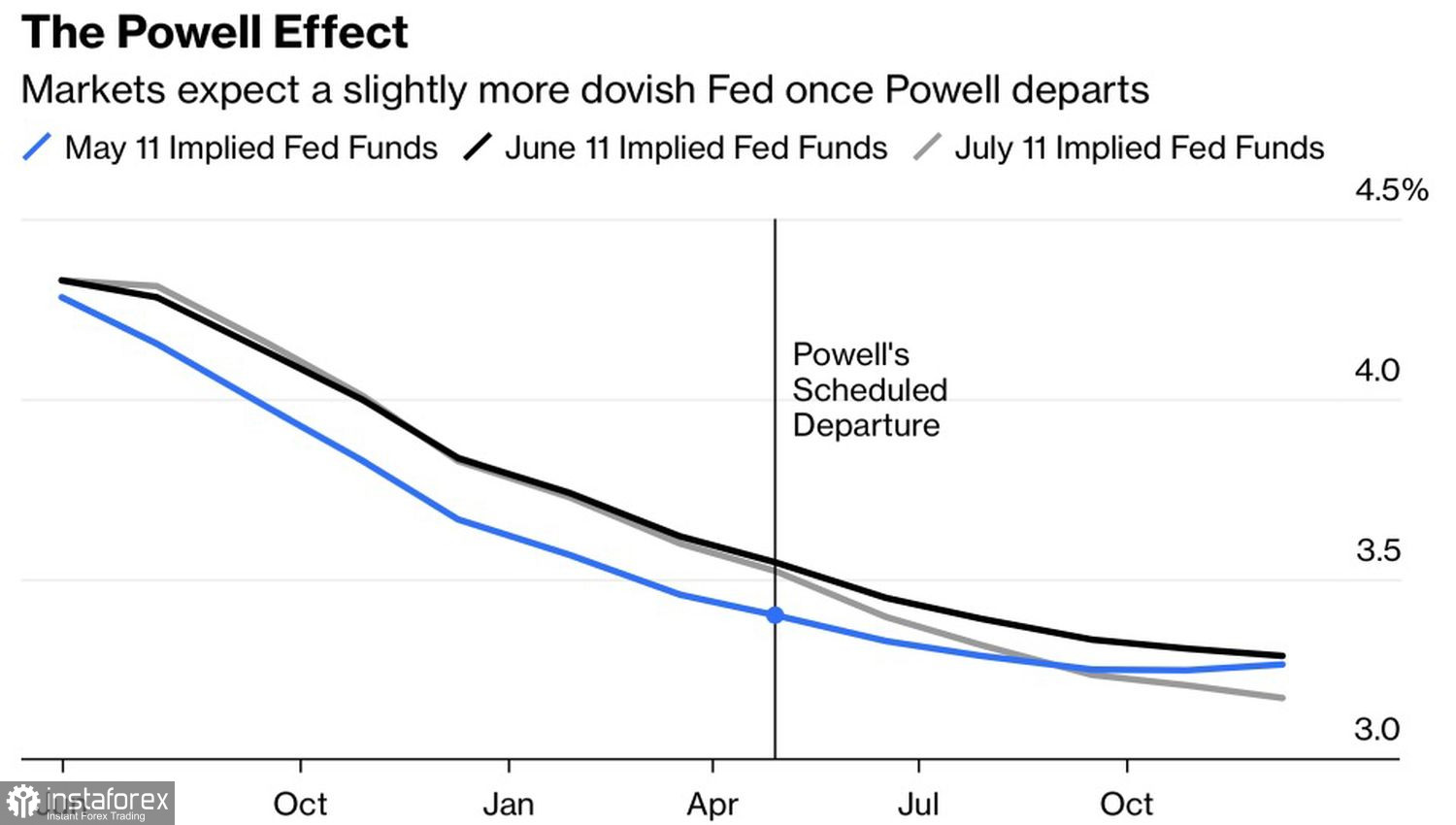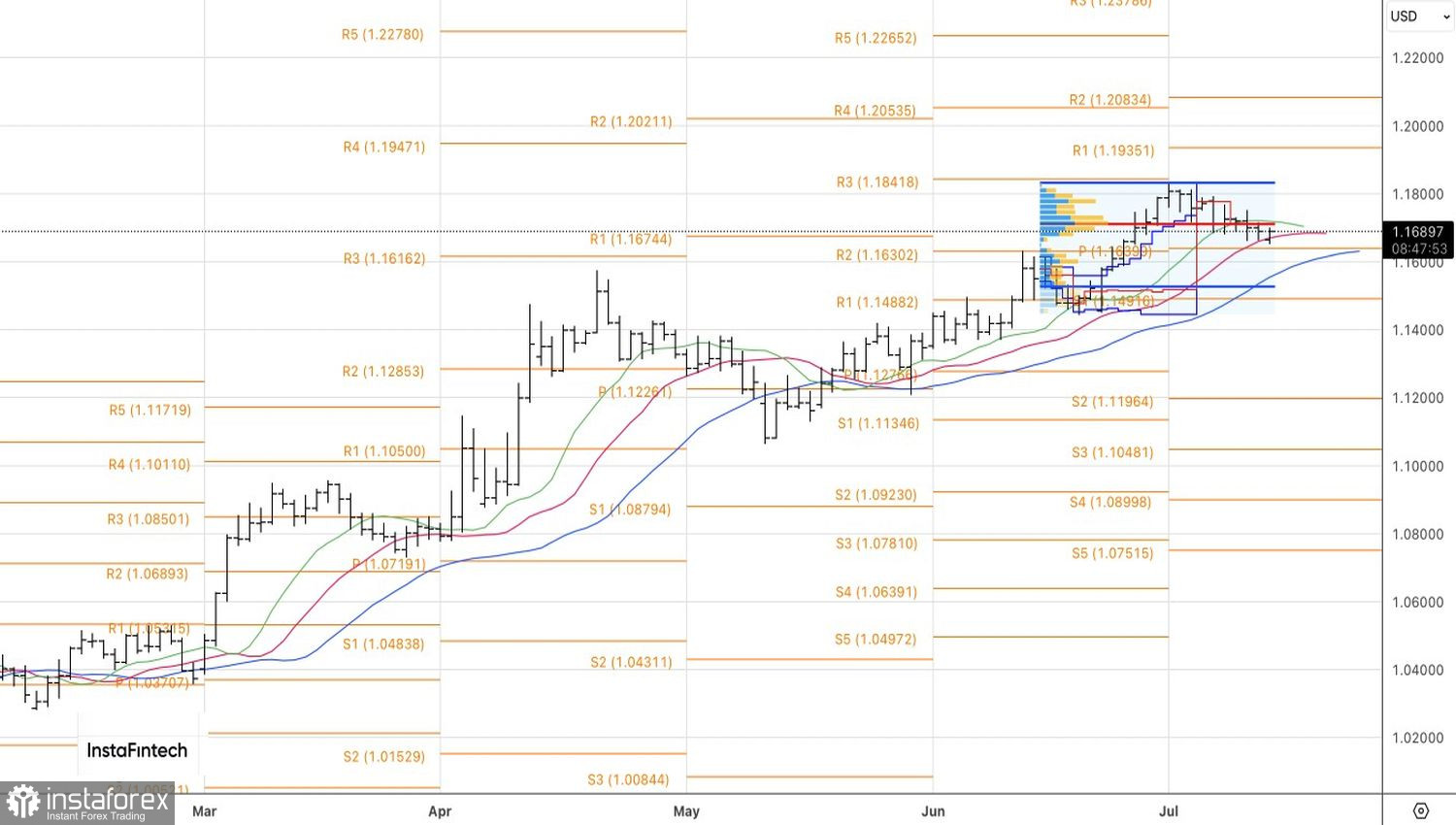The Powell Effect—much like the butterfly effect—is real. Markets are already betting on a sharp easing of monetary policy immediately after the Federal Reserve Chair steps down in the first half of 2026. At the same time, investors do not expect Jerome Powell to leave office before his term ends. Overconfidence could prove costly for EUR/USD bears.
According to Deutsche Bank, the dismissal of Powell could lead to a 3–4% drop in the USD index within 24 hours, while Treasury yields could spike by 30–40 basis points. Equities, however, are unlikely to suffer; stock indexes would welcome the arrival of a "dove" and anticipate rate cuts.
A weakening dollar and resilient S&P 500 are a combination that suits the White House. It's no surprise that the effort to oust Powell is being led not only by Donald Trump but also by his team. The issue of spending on Fed headquarters renovations could be grounds for dismissal with cause—the only basis approved by the Supreme Court, as political motives do not qualify.
Probability of Jerome Powell's Resignation

So far, markets aren't convinced the Fed Chair will be removed. Polymarket and Kalshi assign a probability of about 20–25%, similar to levels seen in April, when Trump initially floated the idea of removing Powell but backed off after seeing a decline in the S&P 500.
The futures market also doesn't expect the Fed Chair to step down—or to bow to White House pressure. Derivatives currently reflect a 63% probability of a Fed rate cut in September, down from 95% just two weeks ago. Expectations of policy easing rise sharply in the second half of 2026, largely due to the Powell Effect.
Market Expectations for the Fed Rate

The euro came under pressure after Trump announced 30% tariffs on imports from the European Union, which is the United States' largest trading partner with bilateral trade totaling $975.9 billion. Such steep tariffs could trigger a severe recession in the eurozone. Nevertheless, investors remain firmly convinced that Washington and Brussels will find a way to reach an agreement at the last minute. This belief helps EUR/USD remain resilient.

The U.S. economy's resilience in the face of tariffs adds to the risk of a correction in the main currency pair. According to Wall Street Journal analysts, the probability of a U.S. recession within the next 12 months has dropped from 45% to 33%. GDP growth in 2025 is now projected at 1%, compared to 0.8% in April.
Technically, the EUR/USD daily chart shows a test of support at the red moving average. A rebound followed by a return above the fair value at 1.171 would be a signal to buy. Conversely, a breakdown and subsequent drop below the pivot level at 1.164 would increase the risk of a pullback within the uptrend and offer selling opportunities.





















